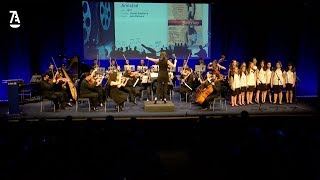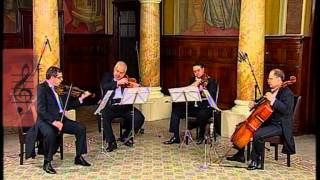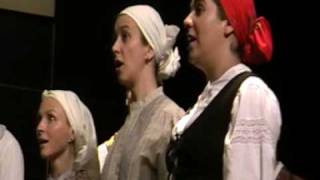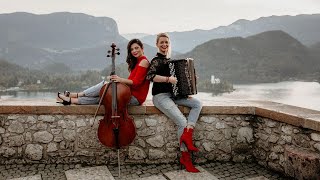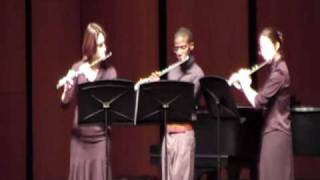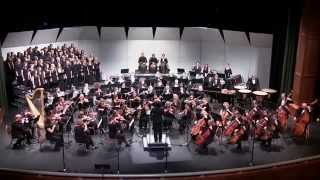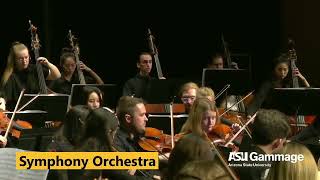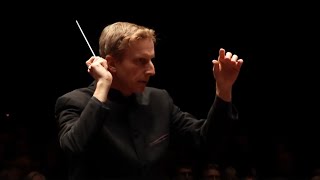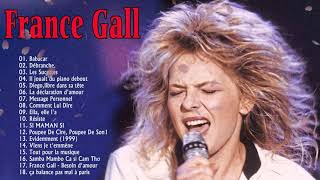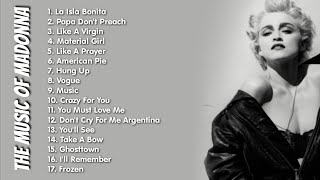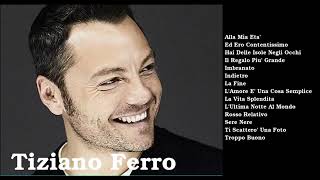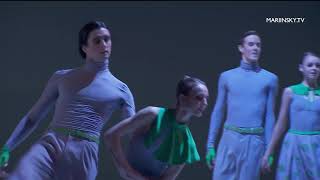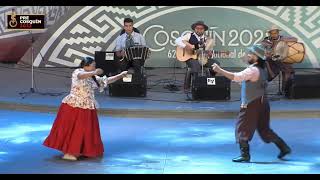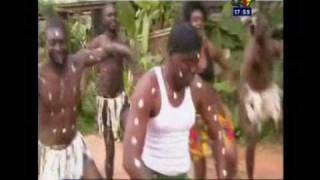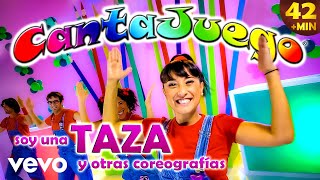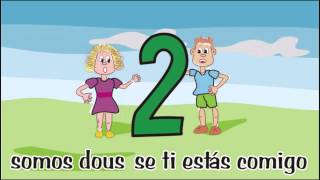May 25th is Africa Day.
May 29 is Ascension Day.
Recommended music videos for initiation to classical music
Africa Day or Africa Liberation Day is a day celebrated on May 25 since 1963. Originally designated as African Freedom Day and celebrated on April 15 to symbolize the progress of liberation movements and the determination to break free from foreign domination and exploitation, the date was changed to May 25, 1963. This change occurred following the formation of the OAU in Addis Ababa, Ethiopia , during a meeting hosted by Emperor Haile Selassie . At this meeting, leaders of thirty now mostly independent African nations agreed to promote decolonization and improve living standards in member states. African Liberation Day (ALD), or Africa Day , reflects a more unified and organized approach to the struggle for liberation and independence for the continent. In addition, ALD has served as a platform for global solidarity against imperialism, recognizing and supporting the struggles of other oppressed peoples globally.
John Williams (1932) is an American composer, conductor, pianist and trombonist, considered one of the most prolific composers of soundtracks in the history of cinema; he has composed some of the most famous and recognizable of all time such as: Star Wars , Harry Potter , Jaws , Catch Me If You Can , ET , Superman , Indiana Jones , Jurassic Park , Schindler's List , Home Alone and others. He has also composed music for various Olympic Games , numerous television series , newsreels and several concert works . He has won the Oscar five times and has 52 nominations to his credit, making him the man with the second most nominations for the highest award in the seventh art after Walt Disney .
Dry Your Tears , Africa is the song from the soundtrack of the film Amistad , a film directed by Steven Spielberg and released in 1997, whose plot is based on the true story of a group of African slaves mutinied on their journey from Sierra Leone to Cuba , aboard the ship La Amistad near Puerto Rico in July 1839. The film extends from that date until the year 1841 when they are declared free and are given the option of staying in the USA as free citizens or returning to their country.
Franz Joseph Haydn (1732-1809), an Austrian composer whose brother Michael Haydn was also a notable composer, was one of the main pillars on which Classicism was based (1750-1810). At the age of six he began his studies on harpsichord and violin. At the age of eight he was admitted as a chorister at St. Stephen's Cathedral in Vienna where he received singing, piano and violin lessons. After his voice changed, he had to survive by working multiple jobs while studying composition by analyzing the works of Carl Philipp Emanuel Bach . He laid the main foundations of sonata form and the formal structure of the string quartet and the symphony ; he maintained a close friendship with Mozart and was Beethoven 's teacher. He died at the age of 77 in Vienna .
String quartet is a musical ensemble of four string instruments, usually two violins, a viola, and a cello, or a piece written to be performed for such an ensemble. The string quartet is widely seen as one of the most important forms of chamber music , given that many of the renowned composers from the 18th century onward wrote works for string quartet . A musical composition for four string players can be of any type, but traditionally features four movements within a long scale structure, similar to that of a symphony.
Structure . From Joseph Haydn, Mozart and Boccherini , the quartet became the most popular genre in the chamber music repertoire . The structure henceforth follows an almost unchanged four-movement model, which remains a reference, although it has been questioned on several occasions. Each of the four movements is subject to a given tempo and a particular musical form: FIRST MOVEMENT: Allegro tempo in sonata form . SECOND MOVEMENT: Adagio tempo, in song, sonata or theme and variations form. THIRD MOVEMENT: Allegretto tempo, in triple time, in minuet and trio form . Although Beethoven 's scherzo form was later used . FOURTH MOVEMENT: Presto tempo with rondo, rondo-sonata or a variety of rondo .
The String Quartets, Op. 3 are a set of six string quartets published under the name of Joseph Haydn by the French music publisher Bailleux in 1777 and later reprinted in 1801 by Maison Pleyel as part of a series of Haydn 's complete string quartets. These works were long believed to be by Haydn , but they had worried musicologists because they seemed out of place in the developmental sequence of string quartets composed by Haydn ; however, a lack of surviving manuscripts made it difficult to confirm that these works were by Haydn or another composer; which was compounded by the fact that Haydn had included them in his 1805 catalogue of works. In 1964, the musicologists Alan Tyson and H. C. Robbins Landon proposed, on the basis of their research, that Bailleux had substituted Haydn 's name for that of Romanus Hoffstetter , a minor composer later known for his admiration of Haydn , a move clearly intended by the publisher to increase sales. In the 1980s, Scott Fruehwald claimed to have "conclusively demonstrated" that the quartets were not by Haydn , based on a stylistic analysis. The study also claimed that only the first two quartets were by Hoffstetter .
Today we offer the Second Movement of Haydn 's String Quartet Op. 3, No. 5 in a version by the ArtMusiK Quartet
Aita Donostia , or José Antonio Donostia (in Spanish Padre Donostia , 1886-1956), was a writer, composer, musicologist and organist from San Sebastián. He began his musical studies in 1896 when he entered the Seminary of Lekaroz (Navarre) at the age of ten. In 1908, after becoming a priest, he furthered his musical training in Barcelona and in the 1920s and 1920s he perfected it in Paris with Eugenio Cools . In 1932 he became a euskaltzain , that is, a member of the Royal Academy of the Basque Language (Euskaltzaindia). As a composer, he produced a wealth of chamber music, organ pieces, numerous choral works, melodies and piano songs, which brought him well-deserved renown. As a folklorist, he collected more than a thousand Basque folk songs.
Kup Taldea . Spontaneously conceived by a group of young musicians with a great love for music, a yearning to enjoy it and, at the same time, the desire to create an ensemble of notable quality, Kup Taldea began its journey in the spring of 2003. This dream became a reality thanks to maestro Gabriel Baltès , professor of choral conducting at the Higher Music Center of the Basque Country, Musikene . The members of the group are musicians who, despite their youth, have extensive experience in the choral world and extensive musical training at all levels. The group has participated in numerous national and international choral gatherings, performing works of great magnitude, both in their technical complexity and their musical significance. (Excerpt from Auñamendi Eusko Entziklopedia)
Today, hosted by Gabriel Baltés , they offer us the popular Basque song Iru Txito harmonized for mixed choir by Aita Donostia .
Camila Cabello ( 1997) is a Cuban singer-songwriter who belonged to the female vocal group Fifth Harmony, until she left in December 2016, acting from then on as a soloist and releasing different albums; She has been characterized by her humanitarian work in favor of female egalitarianism, child protection and other social problems. Her song Havana , which we offer today, found early recognition in the USA as well as in Canada, Australia and the United Kingdom .
The Duo Accellorandom is made up of accordionist Neža Torkar and cellist Romana Šimbera . Neža Torkar (1990) is a Slovenian accordionist who studied music and accordion in Slovenia and Germany . She has given numerous concerts throughout Europe as a soloist and member of chamber groups. She has won important European awards as an accordion soloist. Romana Šimbera (1986) is an American cellist who has released several recordings and performed with various ensembles.
Recommended classical music videos
Joseph Bodin de Boismortier (1689 - 1755) was a French composer of the Baroque period who wrote both instrumental and vocal works, cantatas and ballets. Boismortier 's family moved from his birthplace of Thionville , Lorraine, to Metz where he received his education. In 1713 he traveled to Perpignan , where he married Mara Valette ; in 1724 they settled in Paris, where Boismortier began his prolific composing career. By 1747, he had published over 100 works for various combinations of voice and instruments. Boismortier was one of the first composers not dependent on a patron or protector, composing music of great beauty and sophistication that was highly appreciated by the French public.
A sonata was originally a composition written to be played or "sounded" by one or more musical instruments, just as a cantata was written to be "sung" by one or more voices. From the Classical period (1750-1810) onwards, its definition was adjusted to a work generally structured in three movements (fast-slow-fast), and sometimes four, with or without a short introduction. It should not be confused with sonata form , which is a compositional model consisting of three uninterrupted sections: a) exposition of the two main and contrasting themes, b) development of both themes, c) reexposition or recapitulation. Sonata form is normally applied to the first movements of sonatas, quartets, symphonies and concertos .
Today we offer the sonata for three flutes by Joseph Boismortier in performances by Beverly Harlton , Roldon Brown and Leigh Stewart .
Structure : I (0´7´´) GRAVEMENT-(1´40´) ALLEMANDE .-. II (4´20´´) LENTEMENT .-. III (6´28´´) GAVOTTE EN RONDEAU- (7´27´´) GAYEMENT
Marshall McDonald is a pianist, arranger, and composer who has produced several albums and films and two symphonies to his credit. He has also produced numerous piano scores and books. He graduated from the University of Utah in 2003 with a bachelor's degree in music and communications and later earned a master's degree in public administration. In addition to his composing career, he also teaches music.
Steven Sharp Nelson is an American composer and cellist who also studied and graduated from the University of Utah .
Africa is a work for Chorus and Symphony Orchestra with eight percussionists, composed by Marshall McDonald and Steven Sharp Nelson and based on African themes; it is a tribute to the African continent.
The musical direction of the video we offer today is by the Chinese maestro Xun Sun.
Amy Beach (Amy Marcy Cheney Beach, 1867 – 1944) was an American composer and pianist. Amy began formal piano lessons with her mother at age six and was soon giving public recitals of works by Handel . She was the first successful American composer of large-scale classical music . Her "Gaelic" Symphony , premiered by the Boston Symphony Orchestra in 1896, was the first symphony composed and published by an American woman. She was one of the first American composers to succeed without the benefit of European training, and one of the most respected and admired American composers of her time. As a pianist, she won acclaim for the concerts she gave featuring her own music throughout the United States and in Germany . Beethoven and Chopin , as well as her own pieces. In 1881-82 the fourteen-year-old also studied harmony and counterpoint with Junius W. Hill ; This would be her only formal instruction as a composer, but "she found every book she could find on theory, composition, and orchestration... she taught herself... counterpoint, harmony, fugue...".
A major compositional success came with her Mass in E-flat major , performed in 1892 by the orchestra of the Handel and Haydn Society , which since its founding in 1815 had never performed a piece composed by a woman. Newspaper music critics responded to the Mass by declaring Beach one of America 's greatest composers, comparing the piece to the Masses of Cherubini and Bach . On October 30, 1896, Beach followed up with a major milestone in musical history by premiering her Gaelic Symphony , the first symphony composed and published by an American woman, performed by the Boston Symphony "with outstanding success." In 1900, the Boston Symphony premiered Beach's Piano Concerto , with the composer as soloist.
The Piano Concerto, Op. 45 , is a composition for piano and orchestra by Amy Beach . The work was composed between September 1898 and September 1899 and first performed in Boston on April 7, 1900, with the composer as soloist, the Boston Symphony Orchestra , and Wilhelm Gericke conducting. The composition is dedicated to the pianist Teresa Carreño and was the first piano concerto written by an American female composer.
Structure : The Concerto is articulated in four movements: I (1´39´´) ALLEGRO MODERATO. It is composed in sonata form and is the longest of the four .-. II (20´32´´) SCHERZO: VIVACE (PERPETUUM MOBILE). It is based on Beach's song Empress of Night , op. 2, no. 3 , originally set to a poem by her husband, Henry , and dedicated to her mother Clara .-. III (27´00´´) LARGO. Likewise, the somber third movement is based on Beach 's song « Twilight », op. 2, no. 1 , and is dedicated to her husband, whose poetry again served as the original text .-. IV (31´50´´) ALLEGRO CON SCIOLTEZZA. The theme of this movement recalls that of the third , while marking the beginning of an exuberant finale.
Today's version is offered by pianist Miki Aoki accompanied by the ASU Symphony Orchestra conducted by maestro Jason Caslor
Olivier Messiaen (1908-1992) was a French composer, organist, pedagogue and ornithologist, one of the most outstanding musicians of the entire century. His fascination with Hinduism, his admiration for nature and birds, his deep Christian faith and his love of instrumental color were essential to his development as a person and an artist. He entered the Paris Conservatoire at the age of 11, and had as teachers Paul Dukas, Marcel Dupré, Maurice Emmanuel and Charles-Marie Widor . He was appointed organist at the Church of the Holy Trinity in Paris in 1931, a post he held until his death. In 1941 he was appointed professor of harmony and in 1966, professor of composition at the Paris Conservatoire , a post he held until his retirement in 1978.
The Ascension is the title of a work for orchestra by Olivier Messiaen written between 1932 and 1933, which has the subtitle Four symphonic meditations for orchestra . Its movements are: I (0´41´´) MAJESTÉ DU CHRIST DEMANDANT SA GLOIRE À SON PÈRE (The majesty of Christ asking for glory from his Father) .-. II (7´24´´) ALLÉLUIAS SEREINS D'UNE ÂME QUI DÉSIRE LE CIEL (Serene hallelujahs of a soul that yearns for heaven) .-. III (13´20´´) ALLÉLUIA SUR LA TRUMPETTE, ALLÉLUIA SUR LA CYMBALE (Hallelujah on the trumpet, hallelujah on the cymbal) .-. IV (19´21´´) PRIÈRE DU CHRIST MONTANT VERS SON PÈRE (Prayer of Christ ascending towards his father).
Today we present the version of the Frankfurt Radio Symphony Orchestra conducted by American maestro Hugh Wolff .
Recommended music videos for all tastes
France Gall (1947–2018) grew up in her mother's choir and began recording as a soloist with Phillips at the age of 15. She became very popular with songs by Gainsbourg , Joe Dassin and other French composers, including her father. In 1964, Gall was selected to represent Luxembourg at the Eurovision Song Contest after previously attempting to represent her own country. Out of the ten songs proposed to her, she chose Gainsbourg 's "Poupée de cire, poupée de son" . On 20 March 1965, France Gall performed the song in Naples and became the winner. Her Eurovision triumph allowed France to become known abroad, recording the award-winning song in German, Italian and Japanese; it sold over 3.5 million singles.
Madonna (1958), known as the Queen of Pop , is an American actress and singer. Her albums have been warmly received not only in the USA but around the world, where many of her songs have reached number 1 in these countries. With sales of over 300 million records, she is the most successful woman in history in this field; her popularity has also increased with her participation in various films. A versatile artist, she has worked as a writer, fashion designer, film director, and record producer. In 2008, Billboard magazine ranked her number 2 , behind only The Beatles .
Tiziano Ferro (1980) is an Italian singer-songwriter, who debuted in 2001 with his album Rosso Relativo , achieving great success in Europe. Since childhood, he had musical interests that led him to study piano, guitar, drums and to start composing music. He spoke publicly about his homosexuality, declaring it for the first time in Vanity Fair magazine on October 6, 2010. He is one of the main Italian pop singers and has released several albums that have achieved resounding success not only in his native Italy , but also in some countries in Latin America, Europe and Asia .
Pedro Suárez-Vértiz (1969-2023) was a Peruvian pop-rock musician, singer, composer, and producer, as well as a writer. After joining the group Arena Hash in the 1980s, with whom he made two albums, he began his solo career and successfully released the albums Técnicas para olvidar (1993), Póntelo en la lengua (1996), Degeneración actual (1999), Play (2004), Talk show (2006), and Amazonas (2009). He worked as a columnist for the newspaper El Comercio and published his work: Yo, Pedro . After being diagnosed with bulbar palsy in 2011, he died on December 28, 2023, at the age of 54 due to cardiac arrest. As music critic Francisco Melgar remembers: "He became the most successful rock songwriter for almost twenty-five years." Pedro Suárez-Vertiz , considered a legend of Peruvian rock, is recognized by Billboard as an "icon of Peruvian rock" and his song Los globos del cielo as "a timeless masterpiece of rock in Spanish."
Today we offer the Concert of Pedro Suárez Vértiz carried out at the Ecofair of Chimbote (June 1997): 0:01 The king of ah ah .-. 4:14 Balloons of the Sky .-. 9:07 The beautiful girl .-. 13:48 Life tastes like nothing to me .-. 17:34 If you listen to an angel .-. 22:40 Once a flower .-. 26:49 Gas balloon .-. 31:00 I know it's all over now .-. 34:43 I didn't think it was love .-. 39:32 The Tree .-. 45:18 I can change .-. 53:44 Don't cry anymore .-. 57:45 I rose .-. 1:02:24 I caught a cold in Brazil .-. 1:06:41 My car was a frog .-. 1:14:30 Tell me .-. 1:19:52 I'm falling in love.
Recommended peculiar videos
Aleksandr Glazunov (1865-1936) was a Russian composer, conductor, and influential music teacher. He combined a revival of Russian musical roots with an embrace of Western stylistic influences, which became increasingly prominent in his later works. He was close to the circle of Russian composers of nationalist and folk revival known as the Group of Five . He is considered the last exponent of the Russian national school of composition, founded by Mikhail Glinka .
Les Saisons (The Seasons) is an allegorical ballet in one act and four scenes, by the choreographer Marius Petipa , with music by Alexander Glazunov , his Op. 67. The work was composed in 1899 and premiered by the Imperial Ballet on 26 February 1900 in Saint Petersburg .
The chacarera is a traditional rhythm and dance from Argentina , mainly from the province of Santiago del Estero , which is also practiced in southern Bolivia , especially the department of Tarija . The chacarera is a species that belongs to a large family that music researchers call " zamacueca " that was formed during the colonial period and is heir to various traditions. In the 18th century , the Spanish conquerors brought African slaves from the Viceroyalty of Peru to work as labor for the construction of the City of Santiago del Estero . The territory of Santiago del Estero became a place where conquerors, indigenous people and a large amount of African slave population coexisted.
Structure .
There are several types of chacareras . Traditionally, two types are distinguished: "simple" (straight or truncated) and "double" (straight or truncated). They differ in duration and in some rhythmic peculiarities (as is the case of the truncated) but have the same structure. The structure of the chacarera , at least in these more traditional versions, usually follows the following scheme, which is repeated both in the "first" and in the "second", which are the two formally identical parts that make up the chacarera and many Argentine folk dances, with the exception of the bailecito, some cuecas, carnavalitos and huaynos , etc. PART A: Intro / verse / interlude / verse / interlude / verse / chorus .-. PART B: Intro / verse / interlude / verse / interlude / verse / chorus Both part A and part B may be preceded by a prelude section, often at a slower pace than the rest of the piece.
It is traditionally performed with a guitar, violin, and a legüero bass drum. There are traditional chacareras sung as well as instrumental ones. It is danced by couples who dance freely (but in a group) with rounds and turns.
Dance in Cameroon no longer systematically refers to folk dance groups, as it has for decades. The emergence of numerous comparsas and a dance festival, Abokingoma , contribute to a new dance boom. The country has more than 200 ethnolinguistic groups and the same number of heritage dances, which generally bear the names of the rhythms that underpin them. While most of these dances have retained their original form and place in traditional societies, others have been urbanized, merged with so-called modern dances, or simply inspired new choreographic expressions. For several Cameroonian ethnic groups, heritage dances have become the only visible element of a tradition that is slowly fading.
Guéhéma is a dance of the Yambassa ethnic group, particularly the Gunu or Begunu of the Ombessa district in the Mbam and Inoubou department in Cameroon.
Flamenco dance. Flamenco is an art form originating in Andalusia that combines various elements such as dance, song, and guitar. A product of the cultural fusion of Roma, Arab, Christian, and Jewish cultures, flamenco is now recognized as an Intangible Cultural Heritage of Humanity by UNESCO in 2010. The strong emotional charge that the artists bring to the stage during their performances and the atmosphere created in a tablao make watching a live flamenco show a highly recommended experience. The male and female dancers perform each piece with arm movements, body swaying, and footwork in keeping with each flamenco style, accompanied by the melody of the guitar and the deep voice of the singer.
Antonio Gades (Antonio Esteve Ródenas, 1936-2004) was a Spanish dancer and choreographer born in Elda, Alicante, to a humble family a few months after the outbreak of the Spanish Civil War. In early 1937, his father, a bricklayer by trade, volunteered for the Republican Army, moving to the front in Madrid; a little later, the entire family would follow. In 1949, he enrolled in a dance academy, where, by chance, a few months later he met Pilar López Júlvez, who suggested the stage name Antonio Gades, in memory of the dancers from Cádiz. Pilar would discover him and admire his natural talent and exquisite purity. In 1951, he joined the company. During his first 12 years, he traveled, danced, and also trained in classical dance. "I never lost that time of learning." Gades was already internationally known and appreciated.
At the Rome Opera House, he was called "the dancer of the Andalusian essence," proof of his firm commitment to this folklore. In 1962, he founded his first company, with which he performed in Italy: in addition to Rome, at the Spoleto Festival as principal dancer and choreographer with Carmen, and at La Scala in Milan. He represented Spain in 1964 at the New York Exposition, where he was welcomed as a flamenco idol; in 1965, he premiered Don Juan at the Teatro de la Zarzuela. He did not return to La Scala in Milan until 1968 alongside Rudolf Nureyev. In 1969, he choreographed El amor brujo with the Lyric Opera of Chicago, performing the work in France, Italy, Spain, Japan, the United States, Morocco, and Argentina with his own company, the Antonio Gades Ballet. He toured the world until 1974, premiering that year in Rome his new work: Blood Wedding or, in its original title, Chronicle of the Event of Blood Wedding. Success followed him, even in Spain, but Gades announced his retirement and dissolved the company in reaction to the September 1975 shootings by the Franco regime. In 1976, he filmed The Days of the Past. Except for a trip to Cuba and the United States with Alicia Alonso, he never danced again.
In 1978, he founded the Spanish National Ballet, of which he became director. Despite its resounding success, he only remained in the position for two years; with the National Ballet dancers resigning, he formed a new company until 1981. During the Spanish Transition, he declared himself a "Catalan from Elda" with a Marxist and pan-Catalanist pro-independence ideology. He became active in politics, heading the Bloc d'Esquerra d'Alliberament Nacional (BEAN) candidacy in the Alicante municipal elections in 1979, and remained associated with this party throughout the 1980s. He later joined the Communist Party of the Peoples of Spain (PCPE), serving as a member of its Central Committee until his death. He remained associated with the Communist Party of Cuba throughout his life. In 1983, he starred in Carlos Saura's film Carmen alongside Cristina Hoyos and Laura del Sol. His last production as a choreographer was Fuenteovejuna, based on a text by Lope de Vega and adapted by José Manuel Caballero Bonald, which premiered at the Genoa Opera in 1994. His latest work toured Japan, Italy, France, the United Kingdom, Spain, Cuba, and several Latin American countries. She continued her exercise of purity in art: "dance is not an exercise, dance is a state of mind that emerges through movement." After a long illness, she died in Madrid on July 20, 2004.
Cristina Hoyos Panadero (Seville, June 13, 1946) is a Spanish flamenco dancer, choreographer, and actress. She began dancing at the age of 12 in the children's show Galas Juveniles. Her teachers include Adelita Domingo and Enrique El Cojo. In 1969, Antonio Gades incorporated her into his company as a dance partner, with whom she remained for two decades. During this time, in addition to touring almost the entire world, she participated in the film trilogy Bodas de Sangre, Carmen, and El Amor Brujo, directed by Carlos Saura. In 1983, Carmen en París was presented, starring Cristina Hoyos, a role for which she was described as the best Carmen danced to date. Since 1988, she has appeared in other films and television series, including the film about her own life, Despacito y a compás. In 1989, she debuted with her company, Ballet Cristina Hoyos, at the Paris Festival with her first show, Sueños Flamencos, and in 1990, she performed at the Paris Opera House-Palais Garnier to resounding success. She was the first flamenco company to perform at the Paris Opera and Stockholm Opera Houses. She choreographed the opera Carmen for London's Covent Garden. In 1992, she performed at the Seville World's Fair with Yerma and Lo Flamenco, and at the opening and closing ceremonies of the Barcelona 1992 Olympic Games. In 1994, she presented her show Caminos Andaluces at the Chatelet Theatre in Paris.
In 1996, she choreographed Cuadro Flamenco with sets by Picasso for the Nice Opera House, choreographed Peter Medak's film The Hunchback, and debuted with her new show Arsa y Toma at the Avignon Opera House. In 1999, she presented Al compás del tiempo (In the Comp of Time) and choreographed The Marriage of Figaro, directed by José Luis Castro, at the Maestranza Theatre in Seville. In 2001, she starred in Carmen, le retour (Carmen, Le Retour), directed by Jerôme Savari. In 2002, she presented Tierra adentro (Inland Inside) at the Teatro Principal in Valencia, for which she was awarded the Valencian Regional Government Performing Arts Award for best show. In 2003, she presented Yerma (Yerma) in the Generalife Gardens of the Alhambra in Granada, directed by José Carlos Plaza, where it was seen by over 60,000 spectators. In January 2004, she was appointed director of the Andalusian Flamenco Ballet. In 2005, she presented the show "Journey to the South" at the Gran Teatro de Córdoba, directed by Ramón Oller, with which she toured much of the world. In the summer of 2006, she presented the show "Romancero Gitano" (Gypsy Romance) in the Generalife Gardens of the Alhambra, based on the work of Lorca and directed by José Carlos Plaza. Without losing its purity and popular roots, Cristina Hoyos has managed to refine her dance to become an example of how spontaneity and emotion can seamlessly blend with technical rigor and choreographic discipline. Her work, which recently earned her the National Dance Award, continues to contribute to the understanding and appreciation of this jewel of Andalusia's artistic heritage.
Recommended music videos for children
Various Wikipedia articles have been used to write these texts.
The texts of Videomusicalis are written in Basque, Spanish and English.





